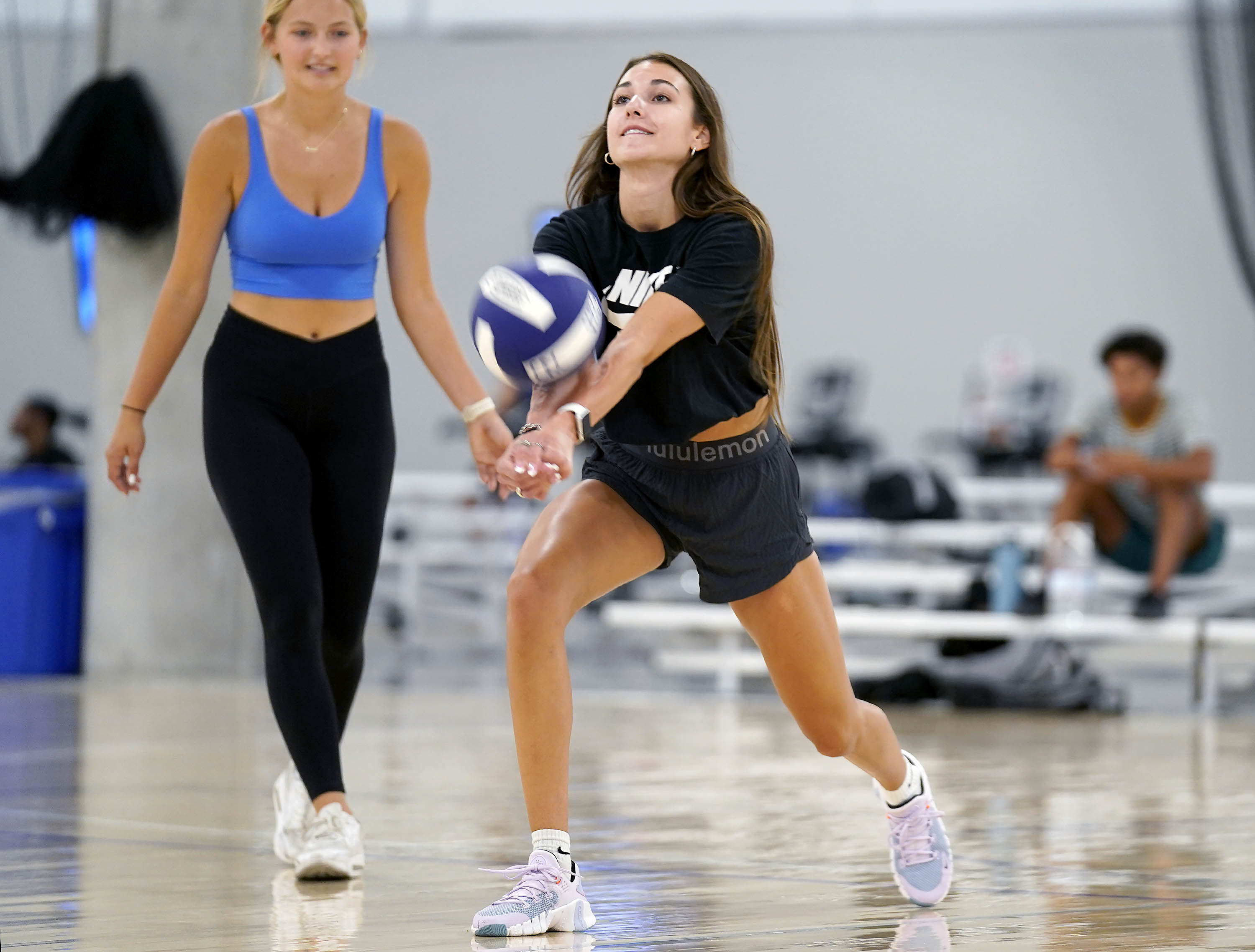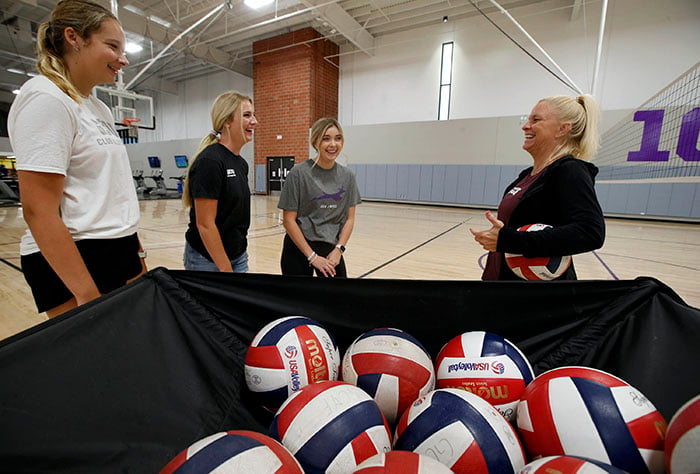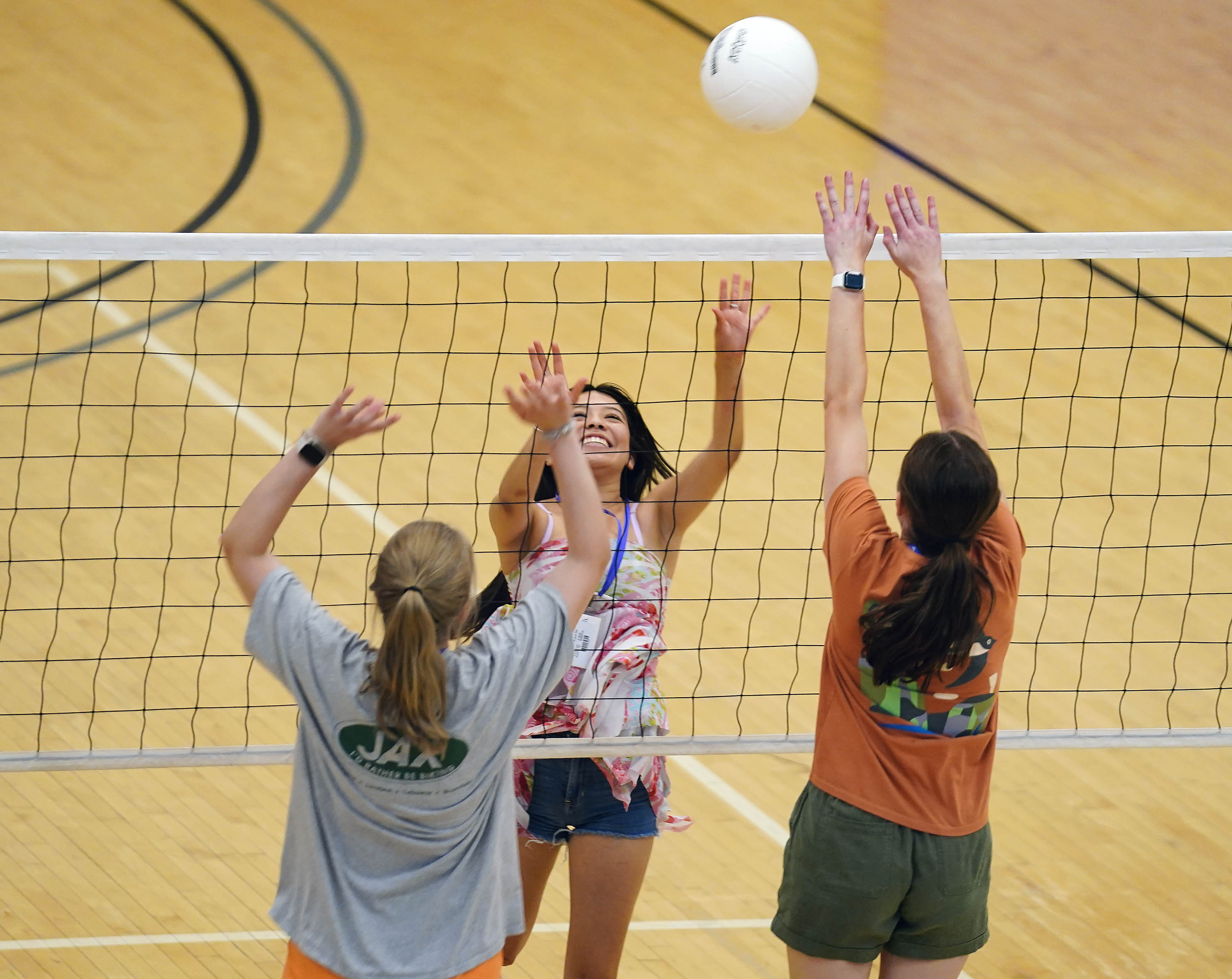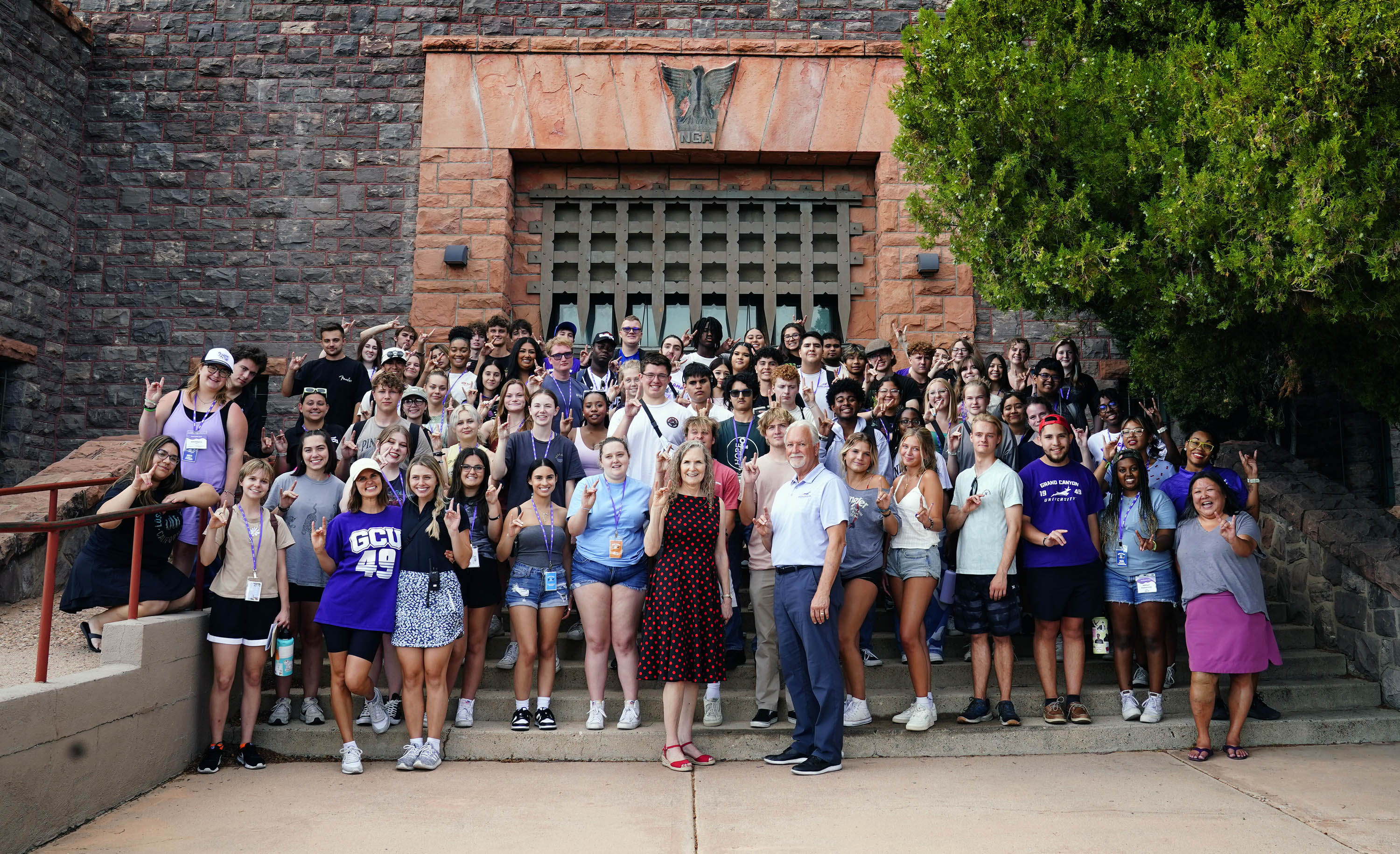
By Lana Sweeten-Shults
GCU News Bureau
Wildland firefighters hike through rugged terrain toward hungry fires, a bandanna oftentimes the only barrier between them and the intense smoke billowing around them.
“If you’re a traditional structural firefighter, you have your gear and mask, right — your oxygen mask to protect you. These wildland firefighters don’t. They don’t have any cover. … They’re not protected, they’re just out there,” said Dr. Zachary Zeigler, Exercise Science professor in Grand Canyon University’s College of Science, Engineering and Technology.
That lack of protective gear isn't the only thing working against them.

They also climb steep embankments, often lugging firehoses and other heavy gear with them, the weight of that gear and the rigors of the hikes chewing up their knees over time. They dig trenches to try to wall those greedy fires, heave chain saws, don’t sleep much during fire season and don't eat well.
They’re exhausted, they’re stressed and, in the end, their heart health pays the price.
According to the 2019 Annual Report on Firefighter Fatalities in the United States by the U.S. Fire Administration, of the 62 firefighters who died on duty (three of those being wildland firefighters), more than half — 33 — died of heart attacks. And a paper published in the New England Journal of Medicine, called “Emergency duties and deaths from heart disease among firefighters in the United States,” noted that the risk for acute myocardial infarction during active fire suppression increased anywhere from 12 to 136 fold.
Those numbers got Zeigler and a team of researchers thinking. They wanted to find out what effects wildland firefighting has on cardiovascular health and so embarked on a two-part study recently published by the Archives of Environmental & Occupational Health.

The study, called “Impact of wildland firefighting on arterial stiffness and cardiorespiratory fitness,” was conducted by Zeigler, GCU alumni Payton Greer and Laura Verduzco and exercise physiologist Joe Sol with the U.S. Forest Service.
What was eye-opening about the findings is that even after a single fire season, the cardiovascular health of wildland firefighters, independent of age, was negatively impacted.
And, “long-term, there seems to be a negative effect, as well,” Zeigler said.
It was a GCU student who sparked Zeigler’s interest in the health of this particular population.
That student, the son of a wildland firefighter, wrote a research paper proposal as part of a class assignment.
“He wrote not exactly the same proposal that we did, but something similar. I talked to him and said, ‘This is pretty cool.’ Let’s work this out, maybe talk to your dad.' … That’s what started it,” Zeigler said.
The University also partnered with wildland firefighters, many from Payson, Flagstaff and Globe, Arizona, who held their annual training event at GCU.
“We assisted them to make sure they were fit enough — that kind of thing — and so when they came to the University to do the training is when we also approached them to see if they were willing to be participants in this research project,” Zeigler said.

“It was cool being able to set that up – to provide some training and education on physical fitness and health-related markers,” said Payton Greer of working with wildland firefighters during their training on campus.
Greer, who performed data collection and analysis for the study, worked at GCU’s Health Information and Programming (or HIP) Clinic before graduating and moving on to pursuing his doctorate in physical therapy at A.T. Still University. The clinic is where the campus’ students can go for health assessments.
Greer said it was interesting working with a population beyond the fellow students he served at the HIP Clinic.
“It was nice to have a special population, such as firefighters – older individuals so we could see a little more how their arterial system works,” he said.
The 28 participants in the study ranged from hand crews to hotshots and engine and Helitack crews. To be included in the study, they had to be actively employed by the U.S. Forest Service, were aged 18-57, male or female. Test subjects were excluded if they had known cardiovascular, pulmonary, renal or metabolic disease, were a smoker or had smoked within the past six months.
The team divided the project into two substudies, both of which measured cardiovascular health by analyzing arterial stiffness, which is a predictor of cardiovascular disease, as well as VO2 max, which is an athlete’s maximum capacity to use oxygen in a graded exercise test. VO2 max is considered the gold standard or most accurate test of aerobic or cardiovascular fitness.
The first substudy focused on career length and explored whether a wildland firefighter’s cardiovascular health would be worse the longer they fought wildland fires. Would Zeigler and his team see a correlation between number of years firefighting and arterial stiffness and VO2 max?
The team asked subjects to take a questionnaire and assessed their fitness and the health of their arteries.

“We found that those who had been firefighters for a long period of time had a lower fitness level regardless of age – we controlled for age,” Zeigler said.
He and his fellow researchers noted that a statistically significant relationship exists between the number of seasons firefighting and VO2 max.
One of the factors the team looked at was hazard pay, which would indicate when a subject was actively near smoke. According to the study, wildland firefighters who reported more than 640 hours of hazard pay in a season had a greater VO2 max reduction than those reporting less hazard pay.
In the second substudy, researchers assessed the impact of a single season of wildland firefighting on measures of arterial stiffness and VO2 max. The team asked firefighters to return to campus after a single fire season so their fitness and the health of their arteries could be assessed a second time. Eighteen were willing to travel back to GCU to be tested again.
Researchers initially tested the firefighters in April 2019, before the start of the season, and then again in October, after the end of the season.
“We found that their fitness went down after a season, which is surprising, because it’s not as if they’re sedentary. They’re extremely active during their season, carrying a lot of gear,” said Zeigler. “And so that’s somewhat an indication of maybe the exposure to smoke and other environmental factors had a negative effect. We also saw some negative changes in the health of their arterial systems, so some slight stiffening of the arteries because of the single season, as well.”
One question the researchers had after the study is if those firefighters’ cardiovascular health returns to normal or improves in the off-season, when they are no longer exposed to smoke and can sleep better, eat better and aren’t in such stressful situations.

“That’s the question that we don’t know, and that’s kind of the note that we made,” Zeigler said. “… But what we do know, again, when we just looked at the relationship between the number of years firefighting and VO2 max, we saw that those that were firefighting longer had lower VO2 max, regardless of age, so that suggests to me that it may not.
"I don’t know about the stiffening of the arteries, but at least the fitness level may not improve — and fitness level is important because VO2 max is one of the strongest predictors of mortality; that number going down is a big deal.”
More research needs to be done to answer that question. Zeigler hopes to continue to study wildland firefighters and, ultimately, find ways to make sure they maintain their health.
“Because we have this collaboration with the firefighters here, the plan is that they’ll continue to come down and we’ll host this training that they do and they could help us out with some research— and they want to.
“They want to know what’s going on. They want to know what they can do to protect themselves.”
GCU senior writer Lana Sweeten-Shults can be reached at lana.sweeten-shults@gcu.edu or at 602-639-7901.
***
Related content:
GCU Today: GCU researchers: Don't skip that day of exercise
GCU Today: Study has the skinny on 'Quarantine 15' risk factors
GCU Today: CSET professor scales weight loss conundrum
GCU Today: GCU flexing a new health initiative










